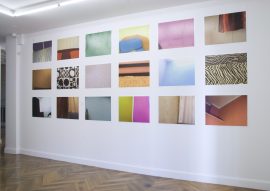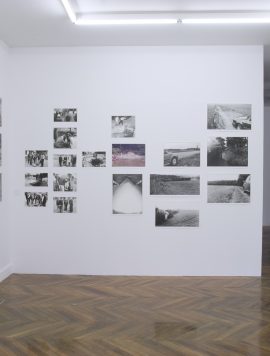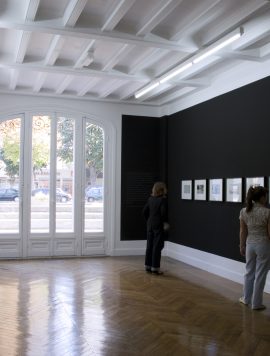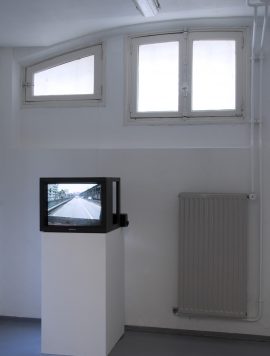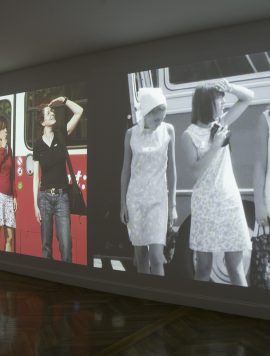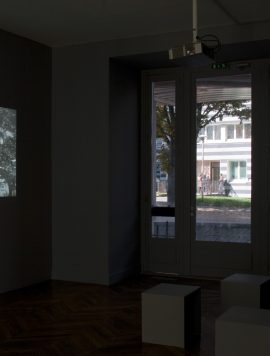Another point of view
The history of the visual image has progressed along with the development of the modern metropolis. Photography, the moving image, television and new digital media have evolved as cities have grown and expanded. We are now living in a visually saturated culture, where you can take a virtual tour of a city that you have never visited; you can always find a street with the help of the iPhone, and you can see a movie of a city being destroyed by spectacular special effects. Is this new visual world changing our relationship with and perception of the city itself? Does it change the way we see ourselves in relation to the city?
We live in a society where the visual image has become ubiquitous and we are completely dependent on images in our daily lives. This constant bombardment of images is overwhelming. We are so surrounded by images that we don’t even register them anymore. Has the meaning of the image changed? Do images have the same sense of reality as before?
The exhibition “Another Point of View” examines how artists work with images of the everyday and give them a different meaning. The artists search and investigate our cities and surroundings, making us stop and look at imagery that we have ignored and overlooked. Considering our world from new positions, they bring into focus small details as well as the big picture. “Another Point of View” presents a new manner of viewing things, a new standpoint from which something is observed and a story is related, a different attitude.
The five artists in the exhibition share an interest in the possibilities of presenting past and present, and blurring the boundaries between fiction and reality. They investigate omitted footage, take new pictures and tell stories. We accompany them on their walks, drifting through the city, discovering street corners, shop windows and views from the tops of buildings.
Paris is the ideal city to discover by walking, to get lost in the streets, to ‘dérive’ through the quartiers. Marcelline Delbecq takes us in a journey with an actress who strolls around the Grand Boulevards via Place Vendôme, Place Clichy and the Folies Bergère, presenting us with narrated images that hover between reality and fiction, past and present. As we sit on a bench listening to the voice of Elina Löwensohn on headphones, it is as though her interior monologue becomes our own. We experience the city, moment by moment, through her voice, her thoughts. We are ‘flâneurs’.
Just as Marcelline Delbecq takes us on a narrative journey in which places and associations collide and flow together, so Amie Siegel leads us through a Berlin in which the past and the present collide. Her double projection shows us a Berlin seen through the cinematography of old GDR (German Democratic Republic) films; and placing herself in the shoes of the cameraman she re-shoots the same streets, from the same angles, following the same routes through a city that is at once the same place, but marked by change. We are mesmerised by how much has changed, but also by how much has stayed the same, as if the past has left its indelible traces on the present. Siegel describes Berlin Remake (2005) as a “performance of absence. A haunting, a doubling, a replica… A conjunction of virtuality and presence, correspondence and contradiction. A feeling of unease.”1
A similar unease and uncertainty haunt Gerard Byrne’s Images or shadows of divine things (2005 to ongoing). Looking at these photographs, we ask ourselves not so much where we are, but when we are. Does an image represent its time? Can we take pictures of the past? Has Byrne retouched his images, erasing the present (new cars, people talking on mobile phones, the modern world itself) and leaving us hovering between the 50s, the 30s or the 40s, and now? Byrne shows us apple-pie, small town America, Mad Men2 America, a Walker Evans, hard-working America apparently untouched by the 21st century. What is important is as much what Byrne excludes from his black and white photographs as what he focuses on.
Peter Piller explores the city through his installations of disparate images. He re-orders and stages new and existing images, giving them new meaning through his re-arrangements, making unexpected connections between these ordinary and forgotten urban fragments. Piller focuses on small details that can be apparently absurd, enigmatic, frightening and mysterious. The impression one has is that he is creating some kind of documentation – but of what, exactly? What purpose do these images serve, what could they possibly mean? He gives us small pockets of suburban reality. In his latest, previously unseen series Hintergrundfarben (background colours), we peer into the corners of rooms, or the junction between a wall and a curtain, a bedspread and wallpaper, glimpsing the edge of a domestic world. The source of the images is a webcam view of unlocatable and unidentifiable domestic spaces. Like De Chirico’s paintings, the absence of the inhabitants becomes a presence one can feel. In these photographs nothing is visible except the setting itself. They seem to be places in an entirely virtual city. They could be anywhere.
If Peter Piller is staring into these unknowable domestic spaces, Józef Robakowski has been gazing out at the world from the window of his small flat in Lódz´, in Poland for decades. His view from a tower block window looks onto a main square, but seems to encompass an entire society. Experimenting with sound and image, Robakowski is able to create his Personal Cinema, a series of films that are more narrative, intimate and subjective than the approved works made under the Soviet regime. As he has said: “Personal Cinema is made when nothing is pretended.”3
Carolina Grau
Translated by John Tittensor
1. See Amie Siegel’s website: http://amiesiegel.net/project/berlin_remake
2. TV drama series set in the world of advertising in 1960s New York.
3. See Józef Robakowski’s website:
http://www.robakowski.net/portfolio_ang.html
around the exhibition
-
14/10/2010
From 7:00 to 8:00 pm
Lecture by Estefania Peñafiel Loaiza (artist in residence at La Galerie until 4 April 2011), at Roger-Gouhier Multimedia library, Noisy-le-Sec. -
30/10/2010
Parcours Est #3:
Bus visit to the exhibitions at Khiasma (Les Lilas), at La Galerie, at Maison Populaire (Montreuil) and Mains d’œuvres (Saint Ouen). -
04/11/2010
From 7:00 to 9:00 pm
Art analysis workshop “A time for art”, guided by Audrey Illouz, art critic. -
18/11/2010
From 7:00 to 9:00 pm
Art analysis workshop “A time for art”, guided by Audrey Illouz, art critic. -
20/11/2010
From 6:00 to 8:00pm
Closing: Marcelline Delbecq carte blanche; Sound performance foley artist Nicolas Becker and reading by Marcelline Delbecq.
